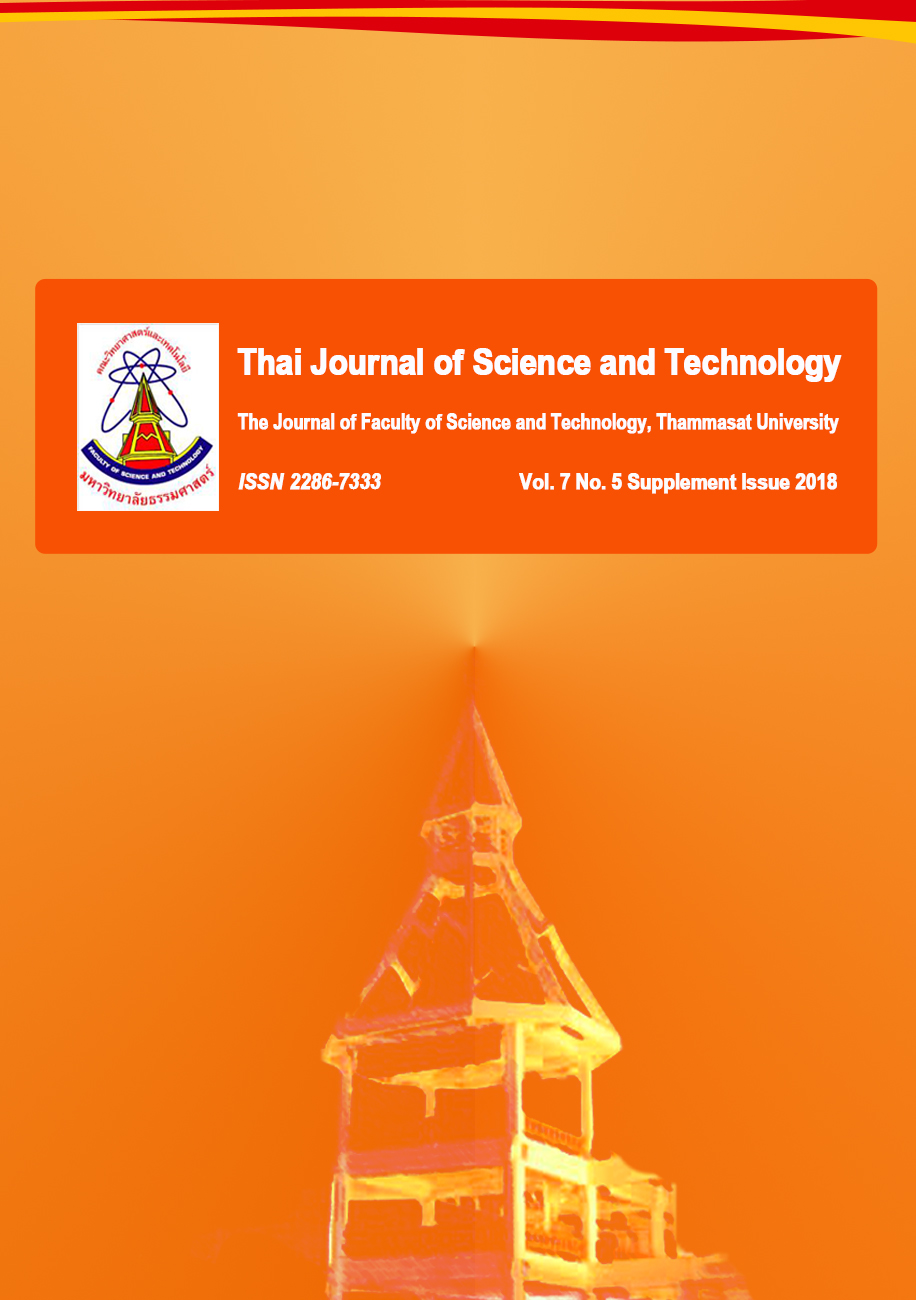การจัดการทรัพยากรเพื่อลดเวลาในงานเทคอนกรีตด้วยวิธีการสร้างแบบจำลองและการจำลองสถานการณ์ในระบบคอสมอส
Main Article Content
Abstract
Abstract
This research involves the process analysis and the resource management of a concrete-placing operation by means of simulation using COSMOS simulator through COSMOS models. The construction process of a certain part of a Gas Separation Unit in Rayong Province was studied. This research presents resource management, modeling concepts, a simulation model and simulation results of the construction operation under study. The simulation outcomes indicated that 3 trucks should be employed in the operation and the amount of concrete to be placed per day should be 50 m3 for the process to be optimal. The results were then implemented on the real operation of the project and found to be appropriate. The efficiency of the overall construction operation was improved which can be seen from the increment of the actual work performed when comparing with the plan. The model presented in this research was able to be used for the simulation of the operation under study. The simulation outcomes was successfully implemented which resulted in efficient manipulation of the resources employed in the real process.
Keywords: modeling; simulation; COSMOS; construction operation; concrete placing; Petri nets
Article Details
บทความที่ได้รับการตีพิมพ์เป็นลิขสิทธิ์ของคณะวิทยาศาสตร์และเทคโนโลยี มหาวิทยาลัยธรรมศาสตร์ ข้อความที่ปรากฏในแต่ละเรื่องของวารสารเล่มนี้เป็นเพียงความเห็นส่วนตัวของผู้เขียน ไม่มีความเกี่ยวข้องกับคณะวิทยาศาสตร์และเทคโนโลยี หรือคณาจารย์ท่านอื่นในมหาวิทยาลัยธรรมศาสตร์ ผู้เขียนต้องยืนยันว่าความรับผิดชอบต่อทุกข้อความที่นำเสนอไว้ในบทความของตน หากมีข้อผิดพลาดหรือความไม่ถูกต้องใด ๆ
References
รุ่งโรจน์ ศรีวิเชียร และจิรวัฒน์ ดำริห์อนันต์, 2553, กรณีศึกษาการปรับปรุงกระบวนการผลิตและติดตั้งผนังคอนกรีตหล่อสำเร็จสำหรับอาคารสูง โดยการจำลองสถานการณ์ด้วยวิธีเพทริเน็ทส์, ว.วิศวกรรมสารฉบับวิจัยและพัฒนา 21(1): 27-34.
Chen, Z. and Shan, B., 2012, The Application of Petri Nets to Construction Project Management, pp. 151-158, In Luo, J., Affective Computing and Intelligent Interaction, Advances in Intelligent and Soft Computing, Springer-Verlag Berlin Heidelberg.
Damrianant, J. and Wakefield, R.R., 1998, Examination and modification of Petri net-based methodology for construction-process modeling, J. Proj. Constr. Manag. 4(2): 55-75.
Damrianant, J., 2003, COSMOS: A discrete-event modeling methodology for construction processes, Int. J. Internet Enterprise Manag. (IJIEM) special issue on "Product and Process Modeling in Building and Related Industries 1(2): 128-152.
Damrianant, J., 2018, Optimization of supply trains in tunnel boring operation using tunnel boring machines, pp. 8-12, Proceedings of the 6th International Conference On Advances in Civil, Structural and Mechanical Engineering, Zurich.
Liu, W., Wang, P., Du, Y., Zhu, M. and Yan, C., 2017, Extended logical Petri nets-based modeling and analysis of business processes, IEEE Access 5: 16829-16839.
Meklersuewong, S. and Damrianant, J., 2013, Energy reduction in road construction, pp. 523-532, Proceedings of the 3rd International Symposium on Engineering, Energy and Environments, Bangkok.
Puangpool, S. and Damrianant, J., 2002, An application of restricted colored Petri nets for concurrent engineering in construction, pp. 405-411, Proceedings of the 9th ISPE International Conference on Concurrent Engineering: Advances in Concurrent Engineering, Cranfield.
Sawhney, A., Mund, A. and Chaitavatputtiporn, T., 2003, Petri net-based scheduling of construction projects, Civ. Eng. Environ. Syst. 20(4): 255-271.
Singh, K., Raj, N., Sahu, S.K., Behera, R.K., Sarkar, S. and Maiti, J., 2015, Modelling safety of gantry crane operations using Petri nets, Int. J. Inj. Contol Sa. 24(1): 32-43.
Thomas Ng, S., Yuan, F. and Onuegbu, O.U., 2008, Modelling construction material logistics system with stochastic Petri nets, Constr. Innov. 8(1): 46-60.
Wakefield, R.R. and Sears, G.A., 1997, Petri nets for simulation and modeling of construction systems, J. Constr. Eng. M. 123(2): 105-112.


